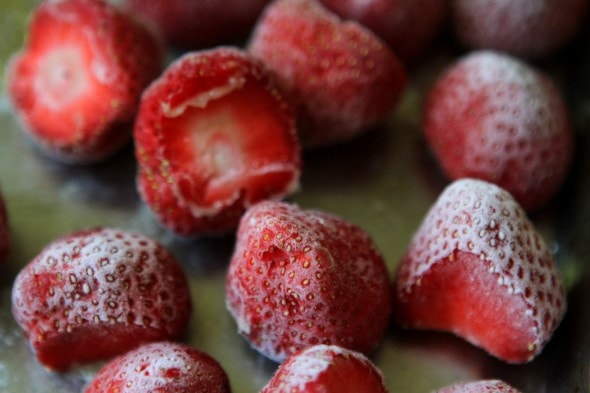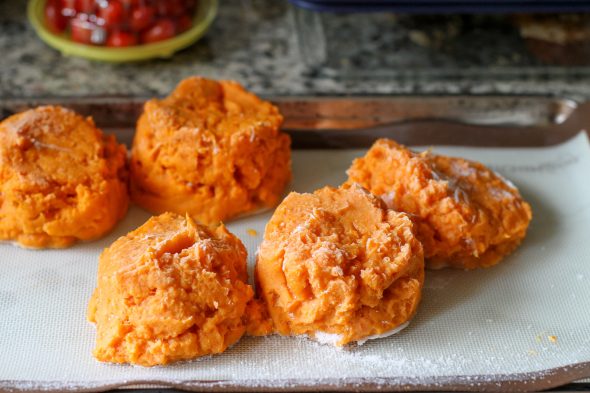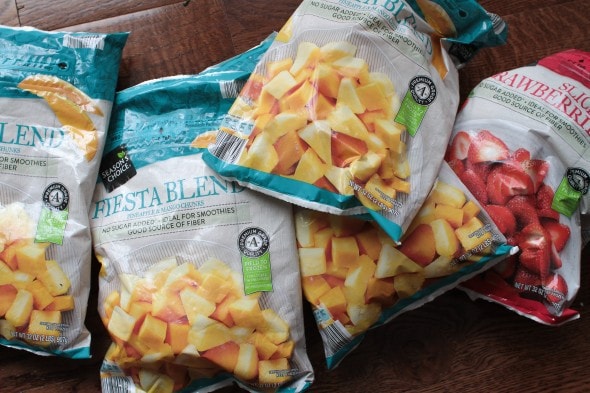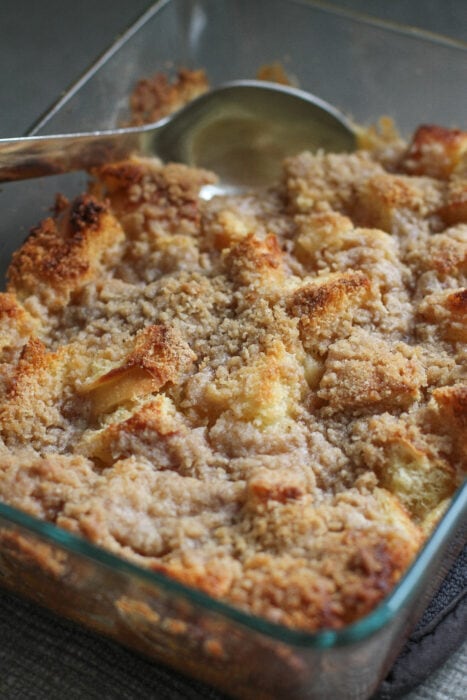Hi Kristen,
I am a long time reader (10 ish years), but hardly ever comment. I have two questions for you.For dinner one night this past week you made The Pioneer Woman’s French toast casserole.
You said that you used an 8×8 pan, but the recipe calls for. 9×13 pan. Did you adjust the quantity of the ingredients that you used? I’m looking to do the same thing for tomorrow’s dinner (Sunday), to use up some cinnamon raisin bagels, and am wondering if I should. The smaller pan size would only require about 60% of the recipe of the larger pan.
Also, regarding health insurance, are you familiar with faith based plans? I do not subscribe to one, but friends of mine – who happen to live close to you – have been enrolled in one for 15 years or more. More recently, I’ve seen ads for them on T.V. (I live in upstate NY). I don’t know the specifics, but my friend felt it matched their values better, and was/is affordable for their family of nine. Every time you mention (being thankful for but) not loving your current health care, I wonder if you know about these faith based medical insurance plans.
-SH
Aww, thank you for hanging here for 10 years! I am honored. 🙂
I know I am a day late for your dinner question (so sorry), but when I use an 8×8 pan for the French toast, I just halve the French toast recipe.
I recognize that an 8×8 pan (64 square inches) is not exactly half of a 9×13 pan (9×13 = 117, and 117/2 = 58.5) but it’s definitely close enough for something like baked French toast!

And honestly, I wouldn’t even have qualms about using an 8×8 pan for half of a 9×13 brownie recipe, or some other similar baked good.
I’ve also used my rectangle pan, which is 9×7.25, and that comes out to 65.25 square inches, which is super close to being half of a 9×13.

For medical insurance:
I did consider a cost-sharing type of medical plan (many content creators, like podcasters and bloggers, choose them), but for clinicals at school, I am required to have actual, factual health insurance.
And that’s usually a requirement coming directly from the hospitals where we do rotations.

nursing school clinicals come with a lot of rules!
Sooo, I am stuck having to get real health insurance.
But, I graduate in May! And then I can work enough to qualify for health insurance at my hospital (which hopefully will be better than what I’ve got going on right now).
Can I cube raw potatoes and throw them in the freezer for stuff like soups and stews? What is the consistency of the potatoes like once I defrost for cooking? Can I also use them to make roasted potatoes in a 400-degree oven? Same for carrots. Can I freeze celery? Any help would be much appreciated.
-Linda
This one was from the comments in a recent post, and Kristin from Going Country did a good job of answering it (the down and dirty is that frozen raw potatoes are rather mushy and gross once you thaw them and try to cook them.)

But I wanted to add a tiny bit of the science behind freezing produce.
As you all know, water expands when it’s frozen. And also as you all know, plants (and that includes produce!) have cell walls that help provide structure to the produce.

When we freeze produce, the water inside the cells expands and forms crystals, and that bursts the cell walls. So then when the produce is thawed and the water melts, we are left with destroyed cell walls, which is why the thawed produce looks rather deflated overall.
The more water the produce has, the more pronounced this effect is.
(One can imagine how squishy thawed watermelon would be!)

Anyway, the reason I mention this is that removing some of the water from a vegetable can help it to freeze better. For example, sauteed mushrooms and celery are much better when frozen and thawed because you’ve removed some of the water from those cell walls.
And this is part of the reason that partially or fully-cooked produce does better in the freezer.

frozen mashed sweet potatoes
One other relevant thing: commercial producers flash freeze their products, a process that produces smaller (and fewer) ice crystals. We can’t really replicate that process at home!

A question I have for you guys: do any of you know why mangoes and peaches retain so much of their texture when frozen? Peaches in particular are very juicy so I am stumped as to why they don’t appear to suffer much from the burst cell wall problem.
A rabbit hole I went down regarding percentages of water in various fruits:
- watermelon: 92%
- peach: 89%
- pineapple: 86%
- mango: 81%
- banana: 75%
Based on this comparison, it makes sense that mangoes fare pretty well in the freezer, but the peaches still stump me.

The googling I did tells me that there’s some variance in the cell wall structure in fruits, with varying amounts of pectin, so maybe some cell walls are just more resistant to destruction in the freezer!
(A P.S. to this question: if you can’t find the answer to, “Can I freeze this food?”, it’s a good time to apply my “Try it and see!” method, with a small sample.)
(A second P.S.: another reason that par-cooking/blanching produce before freezing helps: it slows down enzymes that would otherwise be working to degrade the food.)
1. Why is it forbidden to share med cards?
2. Many people say they learned English by watching teevee or listening to the radio. Have you thought about trying that to amp up your vocabulary, familiarity with the rhythms, and pronunciations? Sounds super frustrating, but you could try it in small doses. If you hate it, just turn it off.-Jana
Med cards are assigned to us in school; they’re basically empty templates for us to fill out about a medication. The filling-out process is part of the learning, so it’s considered cheating to share your info with another student.

(For the record, I hate doing med cards and I don’t find them that helpful! I personally do better learning about a drug in combination with learning about a disease.)
And, your language suggestion is a good one! But I rarely watch TV.
However, after you left this comment, I did put on a Peppa Pig YouTube video in Spanish. Embarrassingly enough, I had to put even that on 0.75 playback speed to keep up. Ha.

I will keep trying!
Your Duolingo streak is impressive. Do you use the free or paid version?
-Tammy
I have the paid version and the reason is: I forgot to cancel after a free trial this summer. Whoops!

But I will say, the app is way less annoying to use now that there are no ads (some of them were so long in between lessons), so I am not super mad at myself for this mistake.
I consider it a small accidental indulgence. 😉
Alrighty, y’all! I think the main topic for discussion today will be: freezing produce.
But as always, any topic in the post is fair game. Have at it!


Tammy
Wednesday 18th of December 2024
I'm the one who asked about free or paid Duolingo.
I use the free version. I also use Rocket Spanish (paid) and watch movies/shows/videos in Spanish but they speak so darn fast, it's challenging. Lucy, on DL, speaks fairly slowly but Sari speaks so fast that I often have to listen to her more than once to catch what she's saying. Being able to slow down videos on YT is a great.
Kristen
Wednesday 18th of December 2024
Yes sometimes I have to press the little turtle button to slow down Sari!
Becca
Tuesday 17th of December 2024
Are you using a particular app to learn Spanish? Really looking to learn for patients I deal with would so so help.
Kristen
Tuesday 17th of December 2024
I'm mainly using DuoLingo, but I also follow some Instagram accounts. Hablamed on Instagram might be helpful because he posts Spanish specifically from a healthcare perspective.
Bridgette Gauthier
Tuesday 17th of December 2024
My niece will be graduating with a Bachelor of Science Degree in Nursing Thursday, December 19, 2024, in New Orleans. What a great Christmas and birthday present.
Selena
Monday 16th of December 2024
You're better off with actual, factual insurance. "Faith" based ones have no requirements for reserves or paying claims period. Reminds me of having a MEWA plan (multiple employer welfare arrangement) - another you may as well gamble your money venture. Neither are regulated and both can leave you high and dry. Kristen's school is wise to require actual, factual insurance. What "faith" or MEWA consider approved services is up to the "plan". Some providers, such as MD Anderson, will consider you uninsured. Meaning you pay up front for services. While health insurance companies first and foremost priority is the bottom line, most either have negotiated or will negotiate. You don't get that with your "faith" based insurance. And if the "faith" based tells you to not be truthful about your situation, a pox on them. I've frozen numerous veggies raw - asparagus, tomatoes (paste and slicers, both go into the chili or spaghetti sauce), zucchini (shredded or slices), and yellow squash. None are used as side dishes but as additions to soups, stews, spaghetti sauce, meat cooked with cooking soups, skillets (leftover steak, potatoes, eggs). I do squeeze water out of grated zucchini before freezing and before using. Cooked potatoes freeze better than raw and are best fried for consumption IMHO.
Dorinda & 3 boys
Monday 16th of December 2024
A few quick notes on Christian cost-sharing plans from the perspective of someone who has used them regularly for the last 25 years...
When people ask me about them, I say, "They aren't the right solution for everyone."
When I started using them, I was a healthy 20-something who rarely visited the doctor, but wanted a plan in place for emergencies. Same story with my parents who joined the same cost-sharing ministry shortly thereafter. None of us dealt with pre-existing conditions or ongoing health issues.
So it's 25 years down the road. We've been through miscarriages, pregnancies, surgeries for my kids, staples, concussion, stitches, colonoscopy, broken toe, an emergency ten-day hospital stay with five days in the ICU... Funds have come in from other people in the cost sharing plan to completely cover 100% each of those situations. In each situation, we've been able to choose the doctors and hospitals we wanted and navigate these things without wading through tedious referrals.
Things are changing slightly as healthcare costs continue to rise. For future events, we'll cover the first $500-700 of an event and funds will come in to cover the remainder.
There are pros and cons to the cost-sharing plans and to the various ministries who run them. They're not a match for everyone. And there may be a time upcoming when our family switches to a more traditional health-care plan. But for this season, it's been a good fit for our needs.